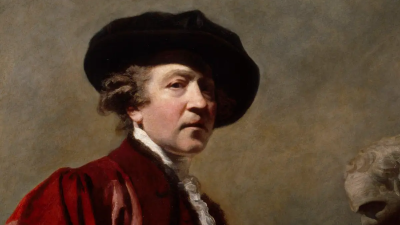
Peter Randall-Page RA, Wabi-sabi, 2018.
Granite. 320 mm x 300 mm x 435 mm. © Photo: Royal Academy of Arts, London.
This image is not available to download. To licence this image for commercial purposes, contact our Picture Library at picturelibrary@royalacademy.org.uk

Peter Randall-Page RA, Wabi-sabi, 2018.
Granite. 320 mm x 300 mm x 435 mm. © Photo: Royal Academy of Arts, London.
This image is not available to download. To licence this image for commercial purposes, contact our Picture Library at picturelibrary@royalacademy.org.uk
Wabi-sabi, 2018
Peter Randall-Page RA (b. 1954)
RA Collection: Art
Wabi-sabi expresses Peter Randall-Page’s fascination with the tension between pattern and irregularity found in nature. The sculpture is a rugged granite boulder, sourced from Bavaria, and then hand carved by Peter Randall-Page using a hammer and punch.
Found glacial boulders are pivotal to the artist’s expression of his interest in the precarious balance between order and chaos found in the natural world. The form of the stone is mathematically random having been shaped by environmental forces over millennia, but the carving is ordered and regular.
As the artist explains: 'Naturally eroded granite boulders shaped by innumerable chance events over a geological timescale are, (within certain bouldery parameters), mathematically chaotic in form. These stones often play the role of both material and muse in my work. I use their random shape as a starting point applying a structuring principle in the form of a geometric pattern or set of simple rules for covering the surface. The generative rule might be to cover the entire surface with one continuous line or a geometric matrix for example. Clearly any rigidity of the pattern is forced to yield to the shape of the stone, bulging and shrinking across its contours.' [Peter Randall-Page: Between Melting and Freezing, 2015]
Randall-Page does not alter the original contours of the stone. Instead he cuts into the surface, drawing attention to the form by the application of lines or simple shapes, inspired by the myriad mathematical patterns found in nature. In this instance, the pattern is an endless loop or coil, evoking a labyrinth, or tightly packed organic matter with the potential to unravel at any time.
The tension between pattern and adaptation, theme and variation, is a fundamental life force. Randall-Page writes: 'Geometry is predicated on the idea of an infinitely small dot and an infinitely thin line, which of course can never exist. Pure geometry does not exist in the world of real things. It is an extrapolation based on the commonality of many variations. The fundamental shape can only be discerned by inference and, as such, can only really exist in our minds. It is almost impossible to envisage a world without this fundamental tension between a ubiquitous tendency for spontaneous pattern formation tempered by an equally ubiquitous tendency for spontaneous random variation. In fact one can characterise the evolutionary process itself as being driven by this tension between ‘theme and variation’, order without randomness, genetics without mutations, would produce evolutionary stasis, whilst randomness without pattern would be tantamount to undifferentiated chaos (whatever that would look like).' [Peter Randall-Page: Between Melting and Freezing, 2015]
In traditional Japanese aesthetics, wabi-sabi is a world view centred on the acceptance of transience and imperfection. The aesthetic is sometimes described as one of appreciating beauty that is 'imperfect, impermanent, and incomplete.'
Further Reading
Peter Randall-Page: Between Melting and Freezing, catalogue produced to coincide with Peter Randall-Page’s solo exhibition at Millennium Gallery (now Anima Mundi Gallery), 2015
Peter Randall-Page at Yorkshire Sculpture Park, 2009
Rock Music Rock Art, Peter Randall-Page New Work, Pangolin, London, 2008
Object details
320 mm x 300 mm x 435 mm
Start exploring the RA Collection
- Explore art works, paint-smeared palettes, scribbled letters and more...
- Artists and architects have run the RA for 250 years.
Our Collection is a record of them.



